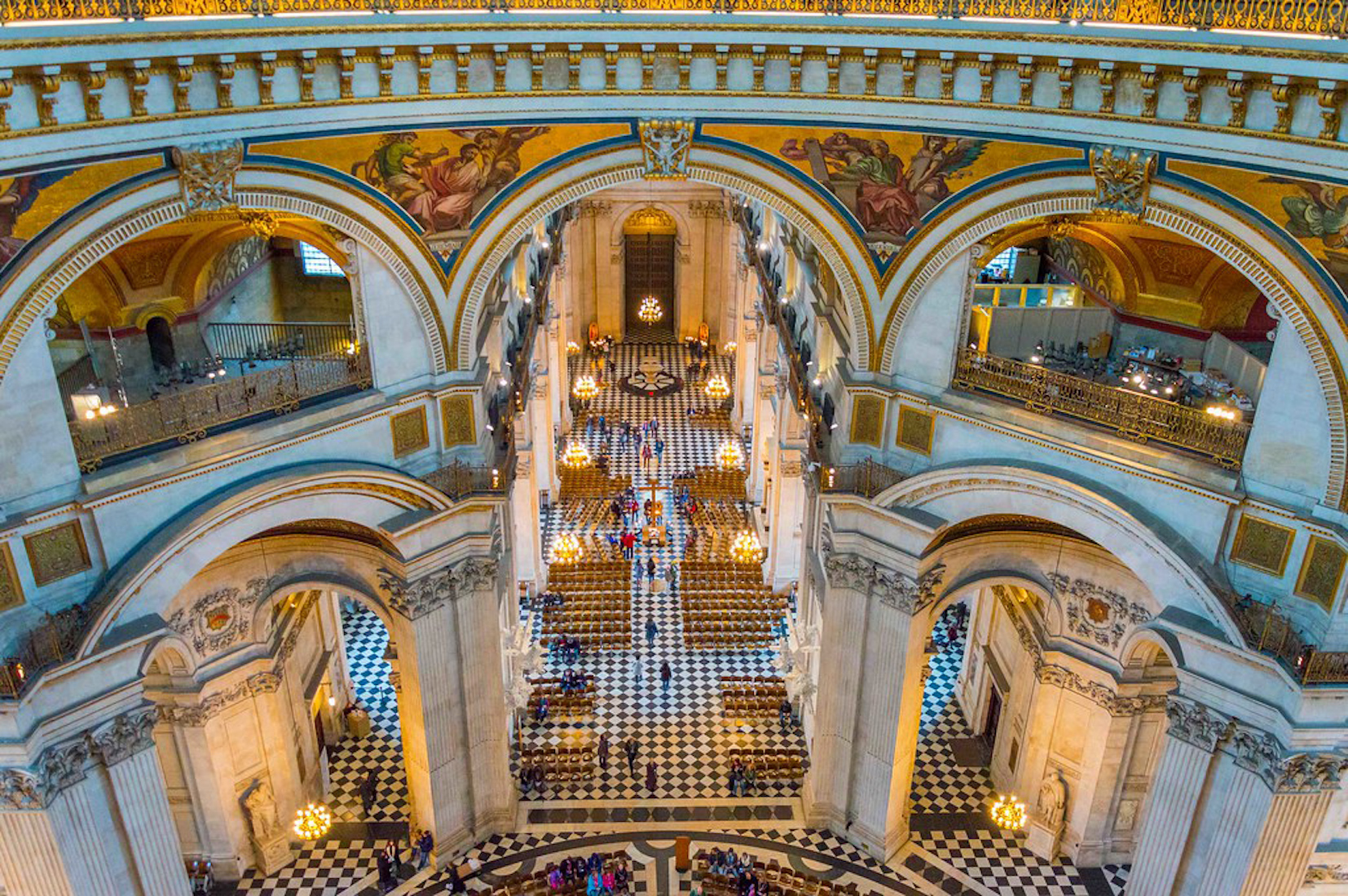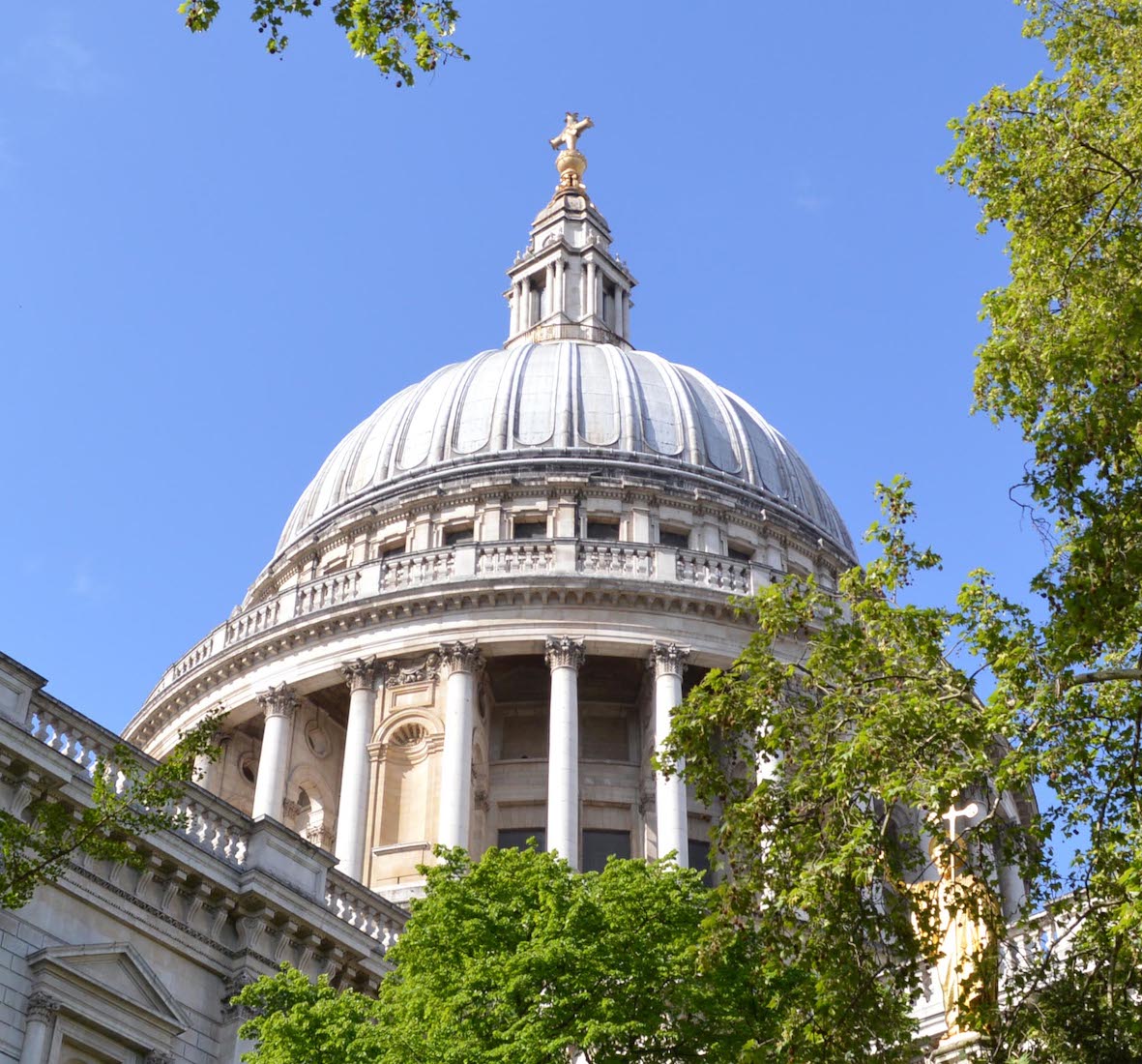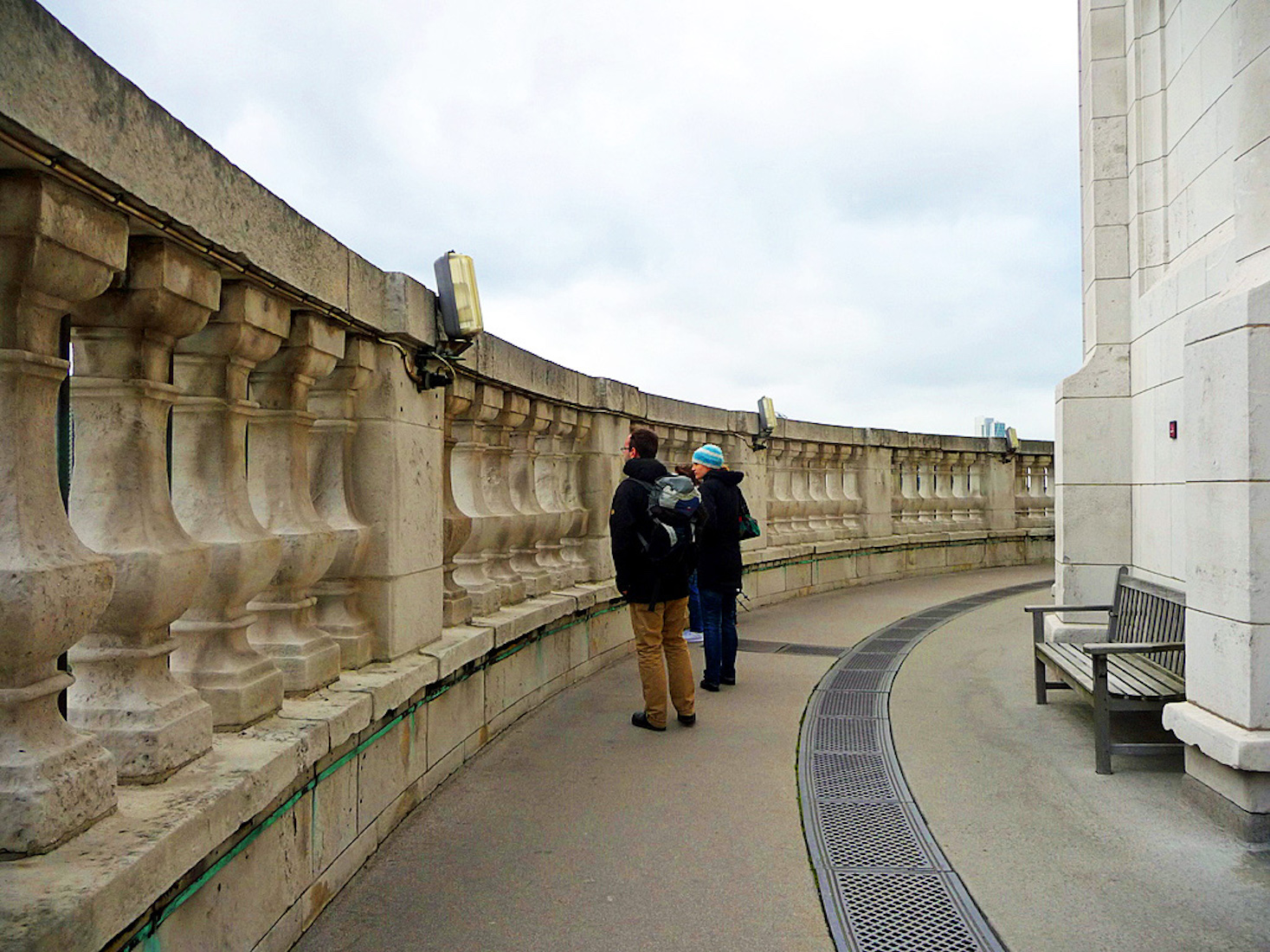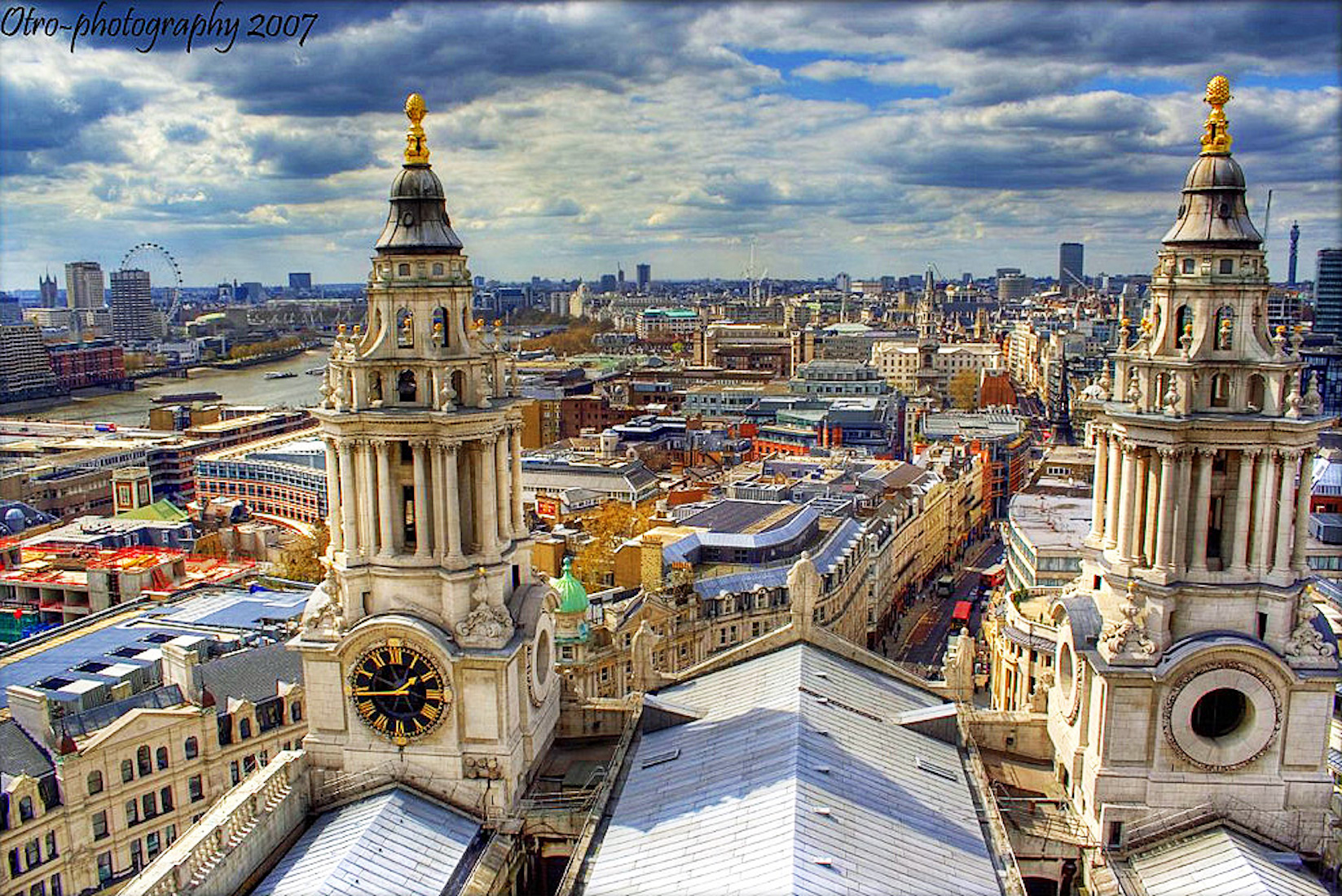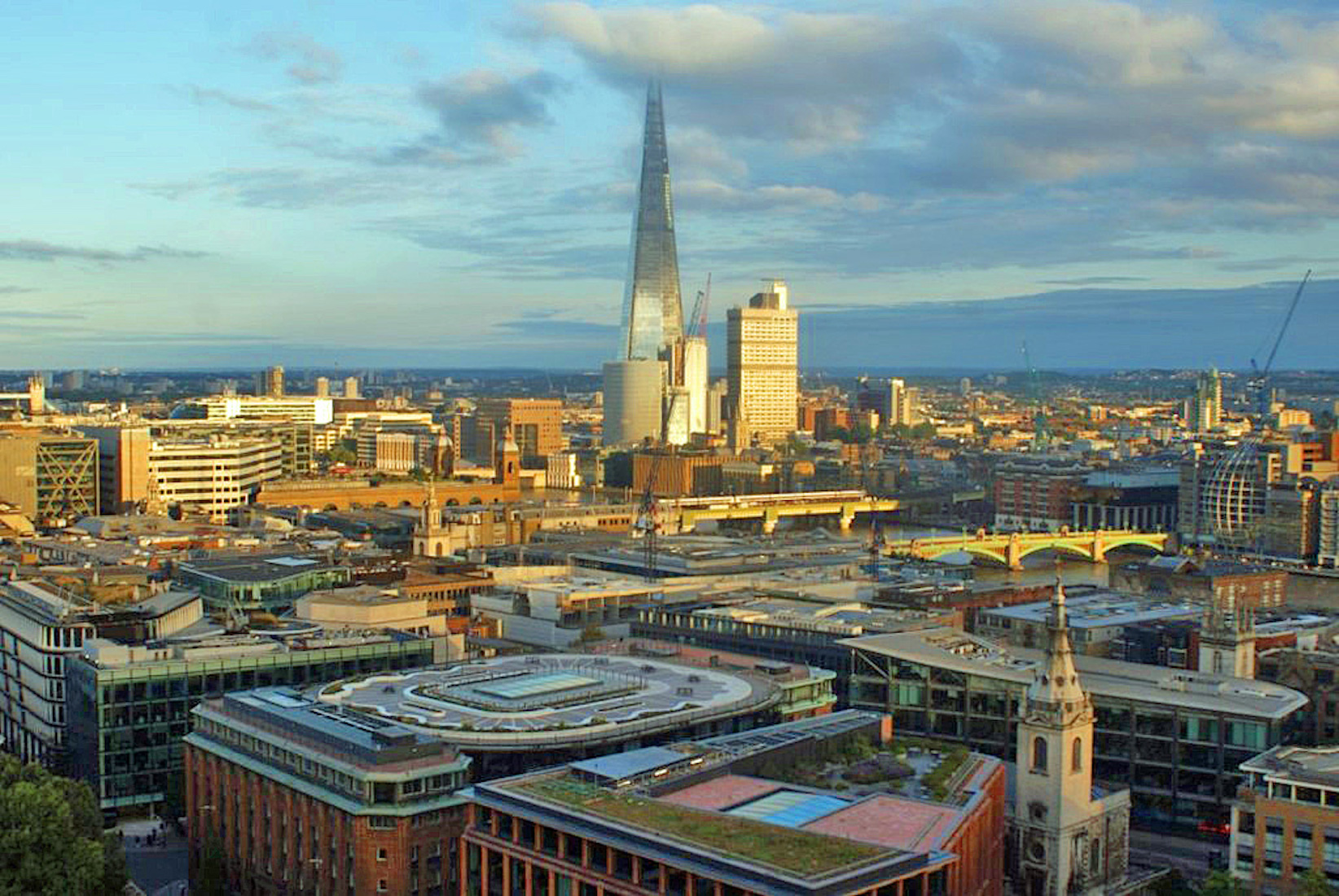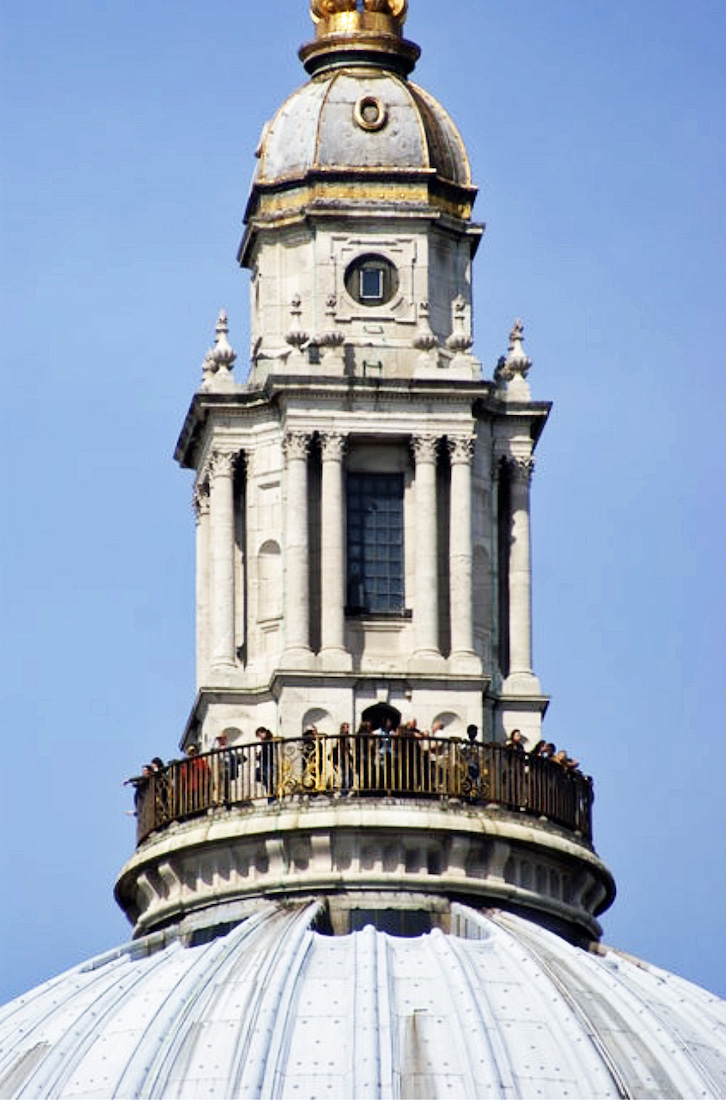DOME
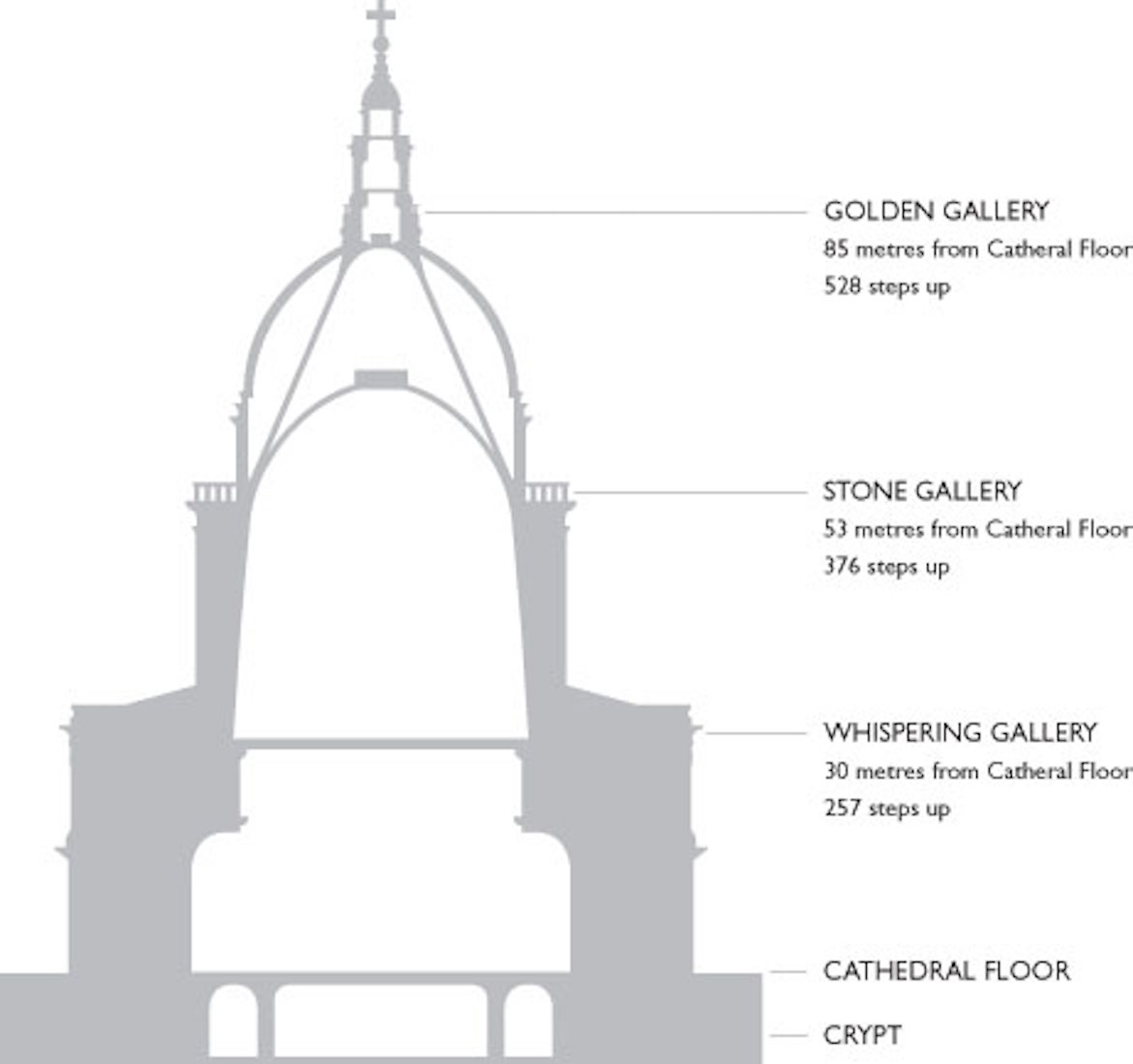
The sketch gives some details about the three galleries in the dome. It is worth visiting each of these, but you have to be fit and energetic! The Whispering Gallery is internal to the Cathedral; the two higher galleries are on the outside. I was surprised to learn how much higher the Stone Gallery is above the Whispering Gallery. • Wren drew inspiration from Michelangelo’s dome of St Peter’s Basilica in Rome, and that of Mansart’s Church of the Val-de-Grâce in Paris, which he had visited. Unlike those of St Peter’s and Val-de-Grâce, the dome of St Paul’s rises in two clearly defined storeys of masonry, which, together with a lower unadorned footing, equal a height of about 95 metres.
D1. STAIRS TO WHISPERING GALLERY AMT
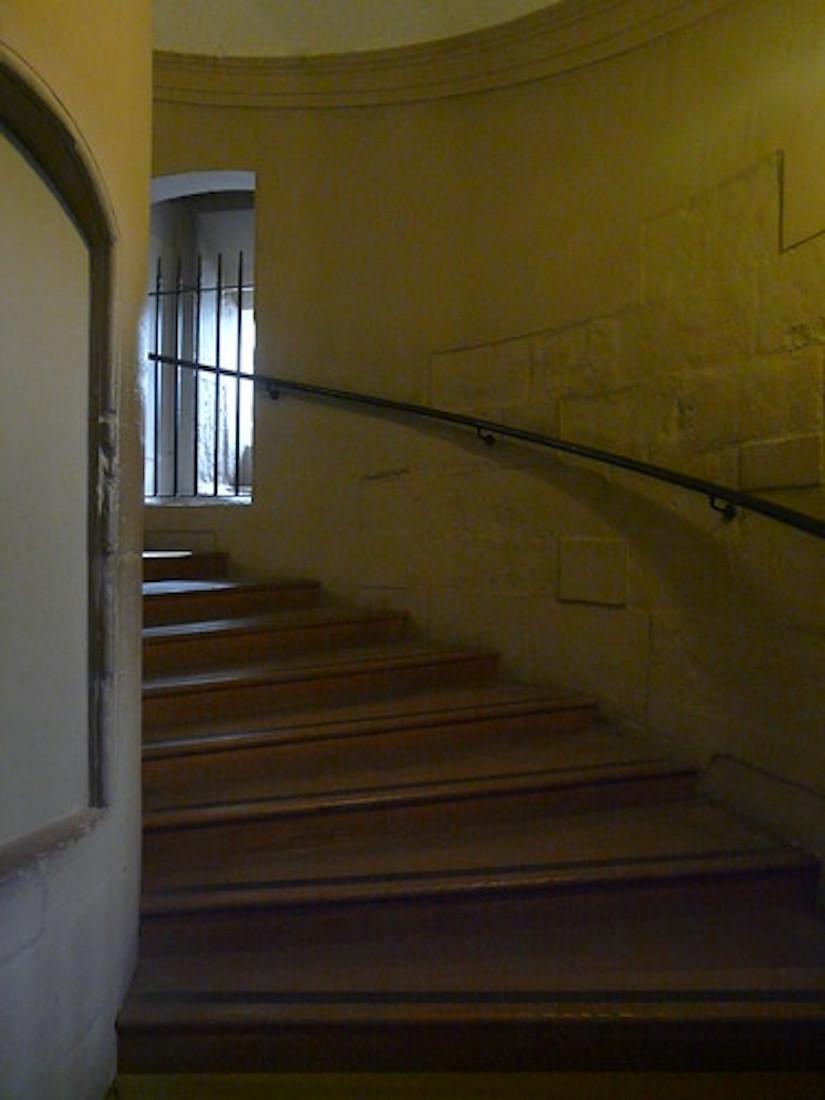
Access to the galleries from the Cathedral floor is off the South nave aisle, near the crossing. To reach the Whispering Gallery, we climb up a sweeping spiral staircase – a seemingly never-ending 257 steps! INDEX
D2. VIEW FROM WHISPERING GALLERY MB
The Whispering Gallery looks out over the interior crossing of St Paul’s, here looking towards the South transept. There is a whole new appreciation of the Cathedral design from here, as well as awe at the sheer size. Check out the people sitting in the chairs facing the nave altar. [Photo Credit: CCL Matt Biddulph]
D3. NAVE VIEW W
This view looks down the nave to the font and the West doors. It is also interesting because it looks under two of the corner arches of the crossing, revealing an array of sound and lighting equipment. [Photo Credit: Wikipedia]
D4. QUIRE VIEW W
This view looks Eastwards over the nave altar and out past the quire to the high altar. In the circle of windows above the gallery are eight niches. It is not known whether Wren intended that these niches should have statues. They remained empty until 1892, when colossal sculptures of the Fathers of the Church were designed for them by C. E. Kempe. I have not found a listing of these, but they are likely to include the four Latin Fathers: Gregory the Great, Ambrose, Augustine and Jerome. [Photo Credit: Wikimedia]
D5. AROUND THE GALLERY W
Why is it called the ‘Whispering Gallery’? It is given its name because a ‘charming quirk in its construction’ means that people can whisper against one wall and be heard on the opposite side. [Photo Credit: Wikipedia]
D6. GALLERY STEPS W
There is no easy way to visit these galleries: a lot of climbing is required! So to another never-ending walkway with warnings to mind one’s head as the dome looms above. [Photo Credit: Wikimedia]
D7. EXTERIOR VIEW OF DOME PRS
This view of the outside of the dome shows the Stone Gallery and the Golden Gallery encircling the dome at the bottom and top of the cupola. We also see here one of four empty niches: space fillers which give added strength to the structure.
D8. THE STONE GALLERY Geo
The Stone Gallery is the first of two galleries above the Whispering Gallery that encircle the outside of the dome. The Stone Gallery stands at 173 ft (53.4 metres) from ground-level and can be reached by 378 steps. The Gallery is a comfortably wide corridor with a high stone wall that runs around the outside, offering views through the gaps at the city below. [Photo Credit: Geograph]
D9. VIEW FROM THE STONE GALLERY Fr
There are good views out over London from the Stone Gallery. Here we look out over the nave and West towers to the Thames, The Eye, and various other well known landmarks. [Photo Credit: CCL Frederico]
D10. VIEW OVER LONDON Geo
This view includes the Shard – a building of rather greater height. Now it is time to head to the very top. A series of tall Victorian spiral stair cases lead inexorably upwards, and if you look down, a growing void in the space between the inner and outer domes. Climbing up in this space is only possible thanks to a trick by Christopher Wren — as the dome seen from inside the Cathedral is smaller than the dome seen outside, they are in fact two separate structures, and we are climbing up in the space between them. A final squeeze through a tiny staircase — without handrails — and you are standing right on top of the inner dome, and if you want, you can peer down to the floor below through a small porthole. In fact, you’re standing on a thin metal trapdoor that is hundreds of feet above the stony floor below, so perhaps it is best not to linger! One more final staircase awaits, and the reward for all that effort. [Photo Credit: Geograph]
D11. THE GOLDEN GALLERY Geo
The very fit and the very brave(!) finally arrive at the Golden Gallery. Not at all golden, but a very narrow stone walkway with a metal railing around the highest accessible spot on the dome. Above us towers the The Ball and Cross (see #D7). The original ball and cross were erected by Andrew Niblett, Citizen and Armourer of London, in 1708. They were replaced by a new ball and cross in 1821 designed by the Surveyor to the Fabric, CR Cockerell and executed by R and E Kepp. The ball and cross stand at 23 feet high and weigh approximately 7 tonnes. [Photo Credit: Geograph]
D12. GOLDEN GALLERY VIEW Geo
The views from the Golden Gallery are exceptional, but remember to hold on tight! [Photo Credit: Geograph] And now it is time to make the long and arduous descent!! Perhaps we shall leave our tour of St Paul’s Cathedral here, having risen to the heavenlies ... .
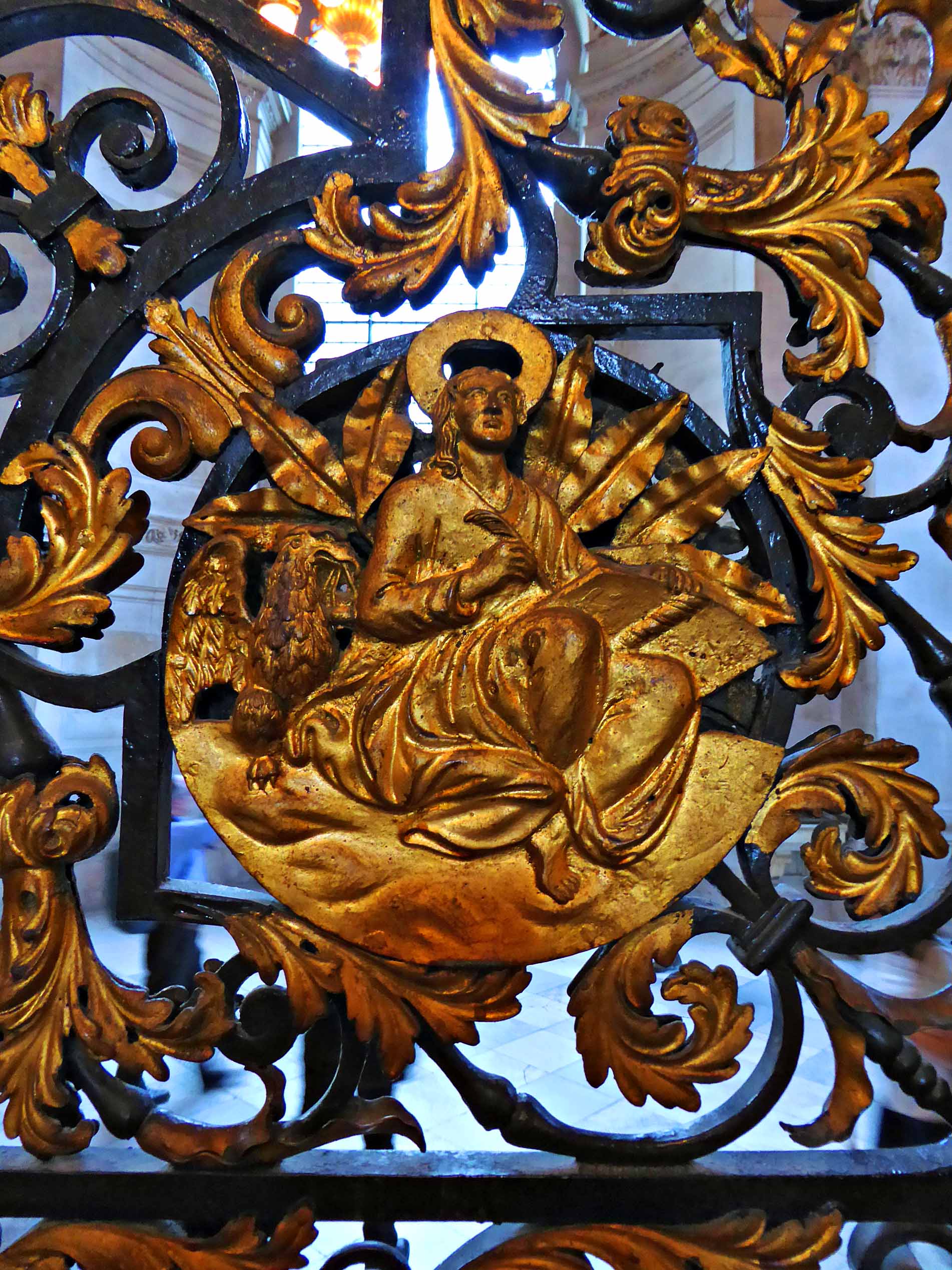
CONCLUSION
St Paul’s in London is an amazing Cathedral! I hope you have enjoyed visiting it with me. I visited it many years ago, and then again more recently when there was a ban on interior photography. I hope you have enjoyed visiting it with me.
Almost all the photographs which appear here are by Aidan McRae Thomson with Rex Harris and myself as supporting contributors. Ownership is indicated by the initials AMT, RH and PRS in the titles. The original photos can be found with these links:
AMT: https://www.flickr.com/photos/amthomson/sets/72157679463063920/
RH: https://www.flickr.com/photos/sheepdog_rex/albums/72157713147486908
PRS: https://www.flickr.com/photos/paulscottinfo/albums/72157713476101971
I am grateful to Aidan and Rex, and also to a host of other photographers who have been kind enough to contribute their photographs. Their contributions have been acknowledged in the text. St Paul’s is a very complex Cathedral, and creating a website for it using other people’s photos has been fraught with difficulties!
I wish to acknowledge the website
http://www.churchmonumentsgazetteer.co.uk/London_City2_StPaul.html#Thomas_Fanshaw_Middleton0
which has been invaluable in helping me navigate the intricacies of the crypt.
I also express my thanks to my wife Margie who dutifully reads through all my websites and checks the typing.
I take little credit for the text which comes from a variety of different sources including the Cathedral website and handbook, and of course the invaluable Wikipedia. I would be glad to receive any comments, criticisms or corrections to this site. The best websites are those which contain no errors!
St Paul’s Cathedral has its own website with the amazing link
Site created 01 / 2022
Paul Scott


